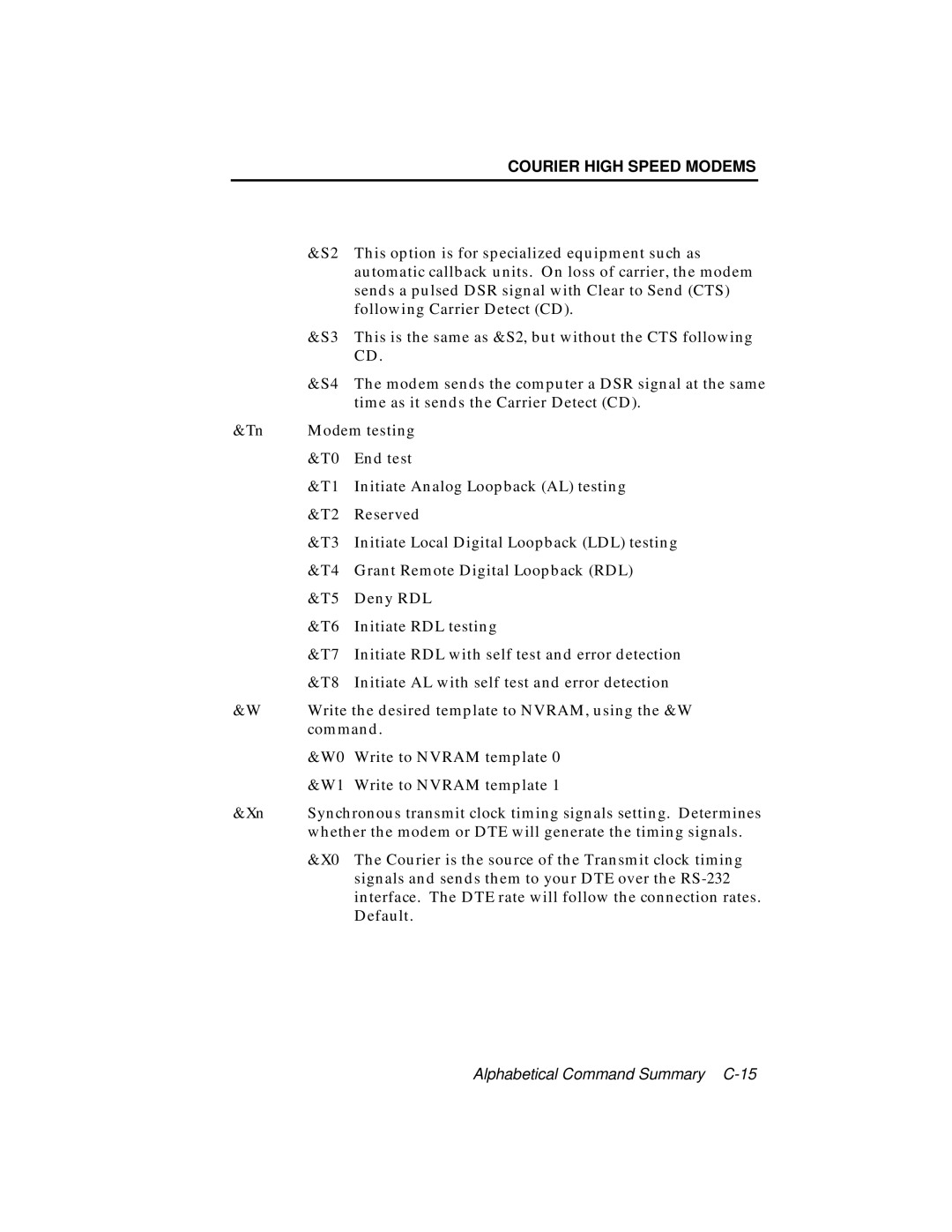COURIER HIGH SPEED MODEMS
| &S2 | This option is for specialized equipment such as |
|
| automatic callback units. On loss of carrier, the modem |
|
| sends a pulsed DSR signal with Clear to Send (CTS) |
|
| following Carrier Detect (CD). |
| &S3 | This is the same as &S2, but without the CTS following |
|
| CD. |
| &S4 | The modem sends the computer a DSR signal at the same |
|
| time as it sends the Carrier Detect (CD). |
&Tn | Modem testing | |
| &T0 | End test |
| &T1 | Initiate Analog Loopback (AL) testing |
| &T2 | Reserved |
| &T3 | Initiate Local Digital Loopback (LDL) testing |
| &T4 | Grant Remote Digital Loopback (RDL) |
| &T5 | Deny RDL |
| &T6 | Initiate RDL testing |
| &T7 | Initiate RDL with self test and error detection |
| &T8 | Initiate AL with self test and error detection |
&W | Write the desired template to NVRAM, using the &W | |
| command. | |
| &W0 | Write to NVRAM template 0 |
| &W1 | Write to NVRAM template 1 |
&Xn | Synchronous transmit clock timing signals setting. Determines | |
| whether the modem or DTE will generate the timing signals. | |
| &X0 | The Courier is the source of the Transmit clock timing |
|
| signals and sends them to your DTE over the |
|
| interface. The DTE rate will follow the connection rates. |
|
| Default. |
Alphabetical Command Summary
